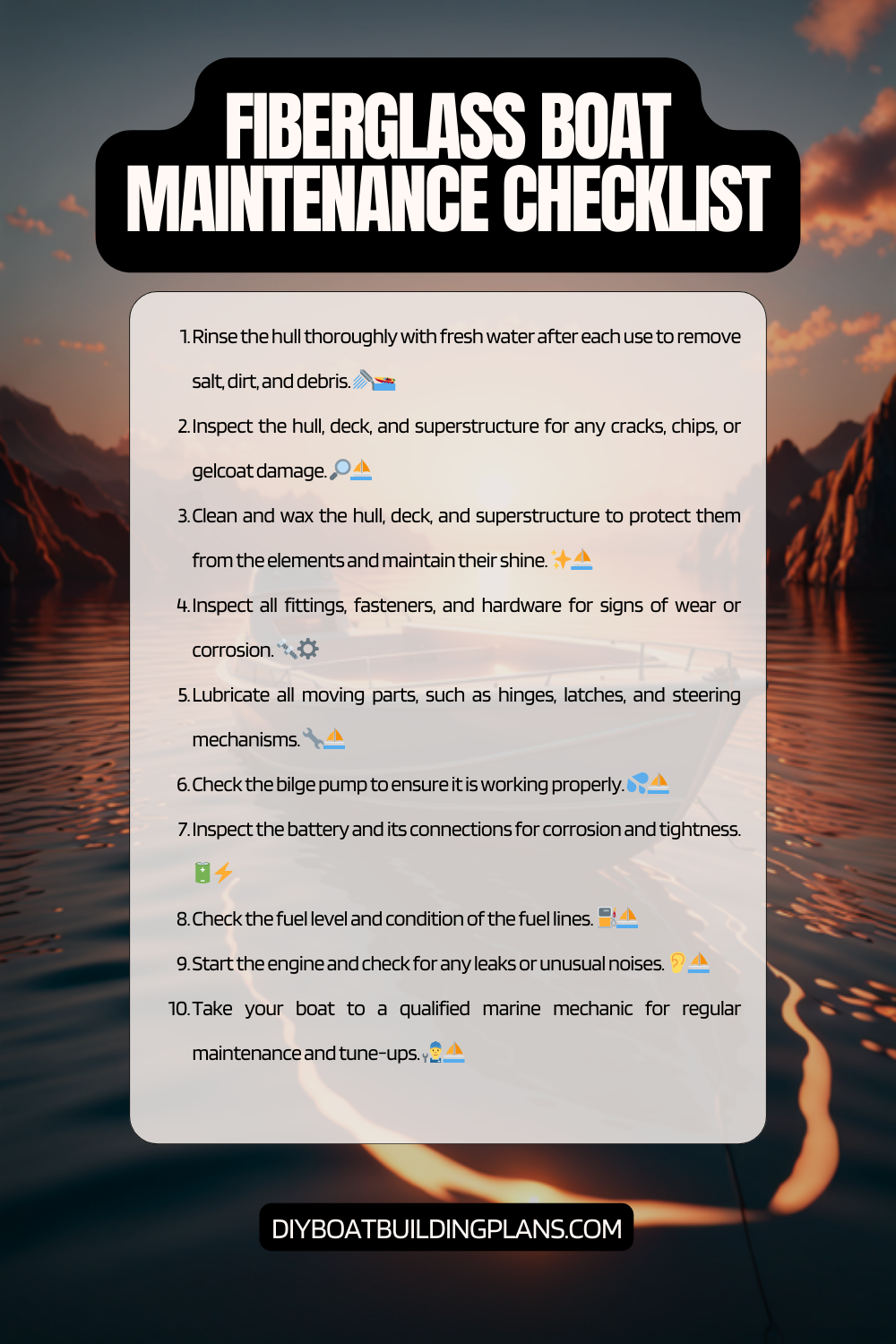Overview of Fiberglass Boat Maintenance Tips
Fiberglass boats have become increasingly popular in the boating industry due to their durability, versatility, and overall performance. The history of fiberglass boats dates back to the mid-20th century when they were first introduced as an alternative to traditional wooden boats. The use of fiberglass revolutionized the industry, as it offered numerous advantages over other materials.
One of the key advantages of fiberglass boats is their strength and durability. Unlike wooden boats that are prone to rotting and warping, fiberglass boats are resistant to water damage and can withstand harsh weather conditions. Additionally, fiberglass is a lightweight material, making fiberglass boats more fuel-efficient and easier to maneuver on the water.
Key Takeaways
- Regular maintenance is crucial for the longevity of fiberglass boats.
- Cleaning the hull and deck, protecting the gelcoat finish, and maintaining the interior are important tasks.
- Checking and replacing seals and gaskets, lubricating moving parts, and inspecting and repairing fiberglass damage are also necessary.
- Winterizing the boat and storing it properly during off-seasons is essential.
- Proper maintenance can save money in the long run and ensure a safe and enjoyable boating experience.

Importance of Regular Maintenance
Regular maintenance is crucial for keeping fiberglass boats in optimal condition and ensuring their longevity. Neglecting maintenance can lead to a range of consequences that can affect both the performance and appearance of the boat.
One of the primary reasons for regular maintenance is to prevent the buildup of dirt, grime, and algae on the hull and deck. Over time, these substances can cause discoloration and damage to the gelcoat finish, leading to a dull and worn-out appearance. Regular cleaning helps maintain the boat’s aesthetic appeal and prevents long-term damage.
Neglecting maintenance can also result in more serious consequences such as structural damage. Fiberglass boats are susceptible to osmotic blistering, which occurs when water seeps through the gelcoat and forms blisters in the underlying layers of fiberglass. If left untreated, this can weaken the boat’s structure and compromise its integrity.
Cleaning the Hull and Deck
Cleaning the hull and deck of a fiberglass boat is an essential part of regular maintenance. It not only keeps the boat looking clean and presentable but also helps prevent damage caused by dirt and grime buildup.
To clean the hull and deck, start by rinsing off any loose debris with a hose. Then, use a mild detergent or boat soap and a soft brush to scrub the surface, working in small sections. Avoid using abrasive cleaners or brushes, as they can scratch the gelcoat finish.
After scrubbing, rinse the boat thoroughly to remove any soap residue. For stubborn stains or discoloration, you can use specialized fiberglass cleaners or oxidation removers. These products are designed to restore the shine and luster of the gelcoat finish.
Protecting the Gelcoat Finish
| Metrics | Description |
| Gelcoat Thickness | The thickness of the gelcoat layer on the surface of the boat. |
| UV Resistance | The ability of the gelcoat to resist damage from UV rays. |
| Scratch Resistance | The ability of the gelcoat to resist scratches and abrasions. |
| Chemical Resistance | The ability of the gelcoat to resist damage from chemicals such as cleaners and solvents. |
| Water Resistance | The ability of the gelcoat to resist damage from water and moisture. |
| Color Fading | The degree to which the color of the gelcoat fades over time. |
Protecting the gelcoat finish is crucial for maintaining the overall appearance and integrity of a fiberglass boat. The gelcoat acts as a protective layer against UV rays, water intrusion, and other environmental factors.
One of the most effective ways to protect the gelcoat finish is by applying a high-quality wax or polish. This creates a barrier that helps prevent oxidation and UV damage. Choose a wax specifically formulated for fiberglass boats and apply it according to the manufacturer’s instructions.
In addition to waxing, it’s important to regularly inspect the gelcoat for any signs of damage or wear. If you notice any cracks, chips, or scratches, it’s essential to address them promptly to prevent further deterioration. There are various gelcoat repair kits available that allow you to fix minor damages yourself.
Maintaining the Interior
While much attention is often given to the exterior of a fiberglass boat, it’s equally important to maintain the interior. Regular cleaning and upkeep can help prevent mold, mildew, and unpleasant odors from developing.
To maintain the interior, start by removing any loose items and debris. Vacuum or sweep the floors and upholstery to remove dirt and dust. Use a mild cleaner or upholstery cleaner to spot clean any stains or spills on the seats and cushions.
It’s also important to regularly inspect and clean the bilge area. The bilge is prone to collecting water, oil, and other contaminants that can lead to foul odors and corrosion. Use a bilge cleaner and a brush to scrub the area thoroughly, and then pump out the dirty water.
Checking and Replacing Seals and Gaskets
Seals and gaskets play a crucial role in keeping water out of various components of a fiberglass boat, such as hatches, windows, and doors. Over time, these seals can become worn out or damaged, compromising their effectiveness.
Regularly checking and replacing seals and gaskets is essential for preventing water intrusion and potential damage to the boat’s interior. Inspect all seals and gaskets for signs of wear, such as cracks, tears, or gaps. If any damage is detected, it’s important to replace them promptly.
When replacing seals and gaskets, ensure that you use high-quality replacements that are specifically designed for marine applications. This will help ensure a proper seal and prevent future issues.
Lubricating Moving Parts
Proper lubrication of moving parts is essential for maintaining the performance and functionality of a fiberglass boat. Moving parts such as hinges, latches, steering mechanisms, and throttle controls should be regularly lubricated to prevent corrosion and ensure smooth operation.
Choose a marine-grade lubricant that is suitable for the specific application. Apply the lubricant according to the manufacturer’s instructions, making sure to reach all moving parts. Wipe off any excess lubricant to prevent attracting dirt and debris.
Regularly inspecting moving parts for signs of wear or damage is also important. If you notice any issues such as rusted hinges or stiff controls, address them promptly to prevent further damage or potential safety hazards.
Inspecting and Repairing Fiberglass Damage
Inspecting fiberglass damage is an essential part of boat maintenance. Fiberglass boats can develop cracks, chips, or other forms of damage over time due to impacts or general wear and tear.
Regularly inspect the hull, deck, and other fiberglass components for any signs of damage. Look for cracks, chips, or areas where the gelcoat has worn away. It’s important to address these issues promptly to prevent further damage and potential water intrusion.
Repairing fiberglass damage can be done using various techniques depending on the severity of the damage. For minor cracks or chips, you can use a fiberglass repair kit that includes epoxy resin and fiberglass cloth. Follow the instructions provided with the kit to properly repair the damaged area.
For more extensive damage, it’s recommended to seek professional assistance from a boat repair specialist who has experience working with fiberglass.
Winterizing the Boat
Winterizing a fiberglass boat is crucial for protecting it during the colder months when it’s not in use. Proper winterization helps prevent freezing, corrosion, and other potential damage caused by cold temperatures and harsh weather conditions.
To winterize a fiberglass boat, start by draining all water from the engine, plumbing systems, and bilge. Use antifreeze specifically formulated for marine applications to protect these systems from freezing.
Next, clean and dry the boat thoroughly to remove any dirt or debris that could cause damage during storage. Apply a coat of wax to protect the gelcoat finish from UV rays and other environmental factors.
Cover the boat with a high-quality boat cover that is designed to withstand harsh weather conditions. This will help protect the boat from snow, ice, and other elements.
Storing the Boat Properly
Proper storage is essential for maintaining the condition of a fiberglass boat when it’s not in use. Storing the boat in a suitable location helps protect it from weather damage, theft, and other potential risks.
When choosing a storage location, consider factors such as climate control, security measures, and accessibility. Indoor storage facilities or covered marinas are ideal options as they provide protection from the elements.
Before storing the boat, ensure that it is clean and dry. Remove any valuables, electronics, and perishable items from the boat to prevent theft or damage.
If storing the boat outdoors, use a boat cover that is specifically designed for outdoor use. This will help protect the boat from UV rays, rain, and other environmental factors.
Download over 500 Boat Plans. Click on the link below.
-->Click Here<--
Fiberglass Boat Maintenance Checklist

Conclusion – Fiberglass Boat Maintenance Tips
In conclusion, regular maintenance is essential for keeping fiberglass boats in optimal condition and ensuring their longevity. Cleaning the hull and deck, protecting the gelcoat finish, maintaining the interior, checking and replacing seals and gaskets, lubricating moving parts, inspecting and repairing fiberglass damage, winterizing the boat, and storing it properly are all important aspects of fiberglass boat maintenance.
By following these maintenance tips and investing time and effort into caring for your fiberglass boat, you can enjoy years of trouble-free boating and preserve its value. Remember to always use recommended cleaning products, follow manufacturer’s instructions for repairs, and seek professional assistance when needed. With proper maintenance, your fiberglass boat will continue to provide you with countless hours of enjoyment on the water.
FAQs – Fiberglass Boat Maintenance Tips
What is fiberglass?
Fiberglass is a composite material made of glass fibers and resin. It is commonly used in boat construction due to its strength and durability.
Why is fiberglass boat maintenance important?
Fiberglass boat maintenance is important to ensure the longevity and performance of the boat. Neglecting maintenance can lead to costly repairs and potentially unsafe conditions.
What are some common fiberglass boat maintenance tasks?
Common fiberglass boat maintenance tasks include washing the boat regularly, waxing the hull, inspecting and repairing any cracks or damage, and maintaining the engine and other mechanical components.
How often should I wash my fiberglass boat?
It is recommended to wash your fiberglass boat after every use, especially if it was used in saltwater. This helps prevent buildup of salt and other debris that can damage the hull.
What type of soap should I use to wash my fiberglass boat?
It is recommended to use a mild soap specifically designed for boats. Avoid using harsh chemicals or abrasive cleaners that can damage the fiberglass.
How often should I wax my fiberglass boat?
It is recommended to wax your fiberglass boat at least twice a year, or more frequently if the boat is used frequently or stored in harsh conditions.
What should I do if I notice cracks or damage in the fiberglass?
If you notice cracks or damage in the fiberglass, it is important to address it as soon as possible. Small cracks can be repaired with a fiberglass repair kit, while larger damage may require professional repair.
How can I prevent damage to my fiberglass boat?
To prevent damage to your fiberglass boat, avoid hitting rocks or other objects in the water, properly secure the boat during transport, and store the boat in a dry, covered area when not in use.



